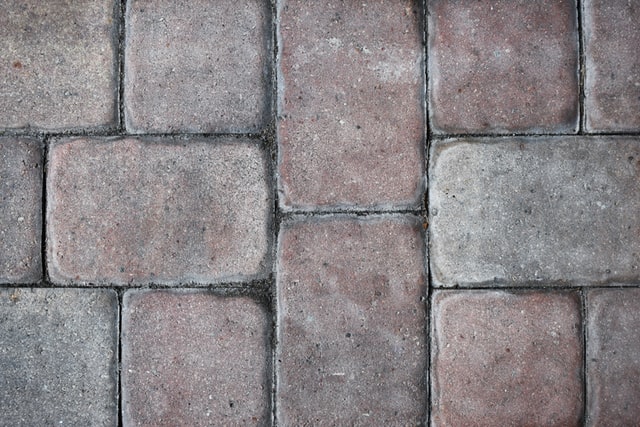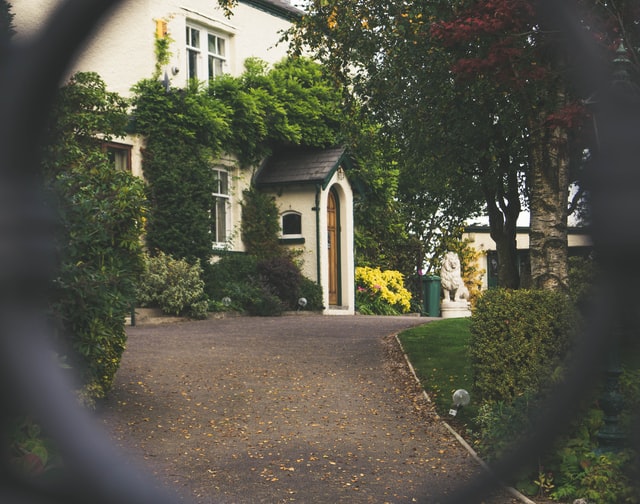Your home is your castle. You have painted, furnished, and utilized it to be everything you need. But what about the driveway? This is one of the most overlooked portions of a home, but it’s very obviously wrong when a driveway isn’t right. It’s time to think about your driveway and how it serves your house. It’s the anteroom for the entire home. It’s often the parking spot for your cars and directs foot traffic to and from home. Subconsciously, you notice the driveway any time you look at a house. It endures the weather, from rain to shine to snow, in tandem with your lawn.
Let’s look at the many varieties of driveways and how they measure up. Is concrete better than asphalt? What’s the difference between seashells and gravel? Why does everyone rave about basalt all the time? We also consider the benefits of landscaping, such as water runoff and snow removal. We offer tips not only for outside holiday decorating but also yard maintenance. A little help goes a long way. The driveway is usually the yard’s centerpiece, and some forethought into it can make a significant difference in your home.
What type of materials fits your needs best?

With so many types of materials to choose from, it’s hard to know which is best. Here, we’ll go over the benefits of different driveway materials to make it easier for you to decide which one is the most suitable option for your needs.
Gravel driveways are quick and easy to install; they are low-cost and require minimum maintenance. They tend to drain well and can be easy to replenish. Gravel compacts nicely while still being flexible should tree roots get underneath. Gravel is loose rock, you can wash it away, and if you live in an area with snow, you can plow your entire driveway away. Using aggregates is a great way to create a beautiful and unique landscape design with all the types and colors of gravel you can find that add aesthetics to your driveway.
Concrete driveways are very sturdy. A properly installed one may last over twenty years, with virtually no maintenance. To customize your driveway design, you can use various colors and types of decorative concrete surfaces and finishes like stamped concrete, aggregate concrete, concrete pavers, or tabby concrete. Shoveling snow from concrete is as easy as it comes. It reacts well to heat and light and has a great load-bearing capacity. Hire professional concrete contractors to ensure the best results.
Paver driveways have a lot going for them. They have incredible durability since they can last over fifty years if installed and cared for correctly; sill, it is not invincible like concrete since metal shovels and plows can scratch it, but they’re far more customizable than other materials. If something goes wrong with a section of it, it is simple to replace that section instead of redoing the entire space. It is largely stain-resistant and can be washed with specific concrete cleaners. Pavers can also increase the return on investment of your property by up to 70% since they can beautify a monotonous space and increase the visual appeal of a home.
Seashell driveways are interesting driveway materials. You pour it down and walk away. Over time, the shells break into smaller pieces, compacting and improving the driveway, so if they crack and break, there is no need to replace them. Shells are a natural deterrent for weeds and pests and, if appropriately sourced, are quite eco-friendly since it´s a natural product. They require low maintenance, and due to their light colors, they can remain cooler in hot climates, making them great for cities near the beach.
Asphalt driveways are like concrete; they’re exceptionally sturdy and will generally last between ten and twenty years. They’re easy to maintain and can handle what the weather throws. It’s cheaper than concrete as well. Worn asphalt can even be resealed, which you can do yourself. Due to its black color, it can retain the heat of the sun, which will make the snow melt faster in the winter, this makes it an excellent option for cold and snowy climates, and still, removing snow will be really easy, especially with a snow blower.
Pervious, or permeable paving, is an eco-friendly concrete option. It’s designed to allow water and snowmelt back to the soil below, making it great for flood prevention. It helps reduce the heat island effect since it will enable the ground underneath to be able to breathe; it is made of natural and sustainable materials, mostly marble, natural aggregate, or recycled glass, and most of the resin used to smooth the paving is made of plant extracts.
Basalt is a paver material that is a naturally rough volcanic rock which makes it one of the densest materials in the world; it is very durable and won’t break easily. Basalt has a glossy and smooth appearance, so it looks sleek. When it is dry, it has a dark charcoal grey color, and it turns jet black when wet, making it look great in a different range of settings. Since basalt is made with high heat and pressure, it can withstand a lot of heat, and it is also highly resistant to alkali liquids and acids. It’s resistant to erosion and scratches, and the long-lasting nature of this material makes it low maintenance. A power wash is more than enough to keep it clean and in shape.
Grass driveways are made with permeable pavers or pavers with holes designed so grass can grow through. They’re quite eco-friendly and are designed to allow the ground to absorb needed rainwater. It does require some regular maintenance, such as weeding, mowing, and watering like any other lawn. If you’d like to save some extra time and money consider investing in artificial grass, that way you won’t have to worry about de-weeding, watering or any other maintenance-related job.
Brick driveways are elegant and attractive. Brick has been used forever because it is a strong and long-lasting material that can withstand heavy loads and is relatively easy to repair. Brick paver driveways can adjust to the settling and shifting of the ground below while being able to maintain their interlocking form. Brick pavers bring a classic aesthetic to a home that will raise the value and curb appeal of the property.
Porcelain paver driveways are an excellent choice due to the extreme durability of the material and the weather resistance it shows. It provides notable reliance in sub-zero temperatures since the texture offers maximum grip and has excellent non-slip properties. Porcelain slabs can withstand a wide range of demands since they are stain, fade, and slip-resistant, making them an ideal material for a driveway surface. They are relatively scratch-proof and resistant to abrasions. Porcelain slabs have a low porosity of 0.05%, so they don’t need to be sealed since they retain very little moisture. An annual power wash is enough to keep them in good shape.
Cobblestone paver driveways have a classic old charm. The Romans first used cobblestone to make pathways and walkways that, even to date, still exist all over Europe. Cobblestone gives a magnificent appearance to a driveway which automatically raises the property’s value. Cobblestone pavers can withstand vehicle load and external pressure with flexible strength, which is why they can last centuries without chipping or cracking if cared for properly. Still, if you have any broken or defective cobblestone, it is easy to replace that section instead of redoing the whole driveway.
Pressure Wash Your Driveway
Pressure washing is a must when dealing with concrete driveways, it can prolong the driveway’s lifespan, and since it’s an outdoor part of the house, it’s a must-do activity to avoid mold and slime forming.
If you have never pressure washed at home before, we suggest you hire a professional, or follow these tips:
You need to clear all the items, so there aren’t any traps on the way. Also, make sure to protect all the doors and windows; you can do it with plastic/trash bags to ensure that there is no water leaking inside of the house.
Before starting, make sure also to have the proper settings on your pressure washer. Depending on the model or brand, if it is not assembled correctly, it can harm the driveway, and the pressure won’t be enough to clean it properly.
Using a chemical product can make cleaning easier, especially when you haven’t done it in a while. After applying the cleaning agent, you can start power washing. Remember to move it in a sideways motion. The mud and stains should come right off, leaving you with clean and fresh concrete/tiles.
Just remember rinsing afterward, especially if you used a cleaning solution.
How important is landscaping for your driveway?
While it’s important to think about your driveway and what will serve you best, don’t forget to consider the landscaping surrounding it. Landscaping is quite aesthetically pleasing, and that alone can increase the value of your home. More importantly, though, driveways are generally bad for the environment. Consider your driveway drainage when it rains. It prevents the ground from soaking up water, which causes runoff. Landscaping care provides a beautiful water management system. The soil and plants surrounding your house help absorb pollutants in the air. Trees can greatly help decrease air temperature, especially in “heat islands” created by cities. Grass and shrubs’ roots hold the soil together, which helps prevent erosion.
Consider a very rainy week. All that water will go somewhere. If the city’s drainage can’t handle it all, it will back up and cause floods. While driveways are quite useful, they are one of the leading causes of water run-off with nowhere to go. Landscaping is your best defense against this. The more landscaping you have, the more water it will naturally take on.
There is a caveat, of course. Landscaping does require maintenance. Plants can be amazing allies against whatever the weather throws at you, but if not kept in check, they can also become extreme problems. Tree roots are among the worst, as they can crack driveways and foundations. Poorly maintained lawns can attract pests. There’s a balance to be maintained, which can be a lot of work. A job well done is its own reward, and this holds merit.
Looking at your colorful, well-maintained lawn will improve your mental health and get you some exercise, to boot. If you have the space, it could lead the way to some cool parking ideas, such as a circular driveway. It might even entice your neighbors to up the ante and create an overall better neighborhood.
What to Consider for Your Holiday Decorations

Now that you have your driveway and yard ready to go, let’s consider the approaching holidays.
Placing Halloween decorations as well as hanging Christmas lights is the classic choice. When considering the roof, simple can be very effective. There’s something extremely pleasing about elegant lights along a roofline. If you approach rooftop decorations intending to protect the roof (by avoiding staples in favor of clamps, for example), you’ll preserve your shingles and roofing for many holidays to come. This goes similarly for your bushes and trees. You want to attach your lights in a way that minimizes damage and is easy to reverse. For paths, railings make great light hangers.
It’s worth considering the power bill before you ensure your lights can be seen from space. The simplest consideration is whether to get LED lights or incandescent ones. LED Lights are much, much more efficient. You can plug far more of them into one outlet. They tend to last two seasons longer than their competitors. There’s a wide assortment of styles and types to choose from. More than that, it boils down to the wattage. While incandescent lights are cheaper off the shelf, they use more watts per bulb. Nearly fifty times more. If you’re going wild on lights, it may cost more upfront but may save you greatly in the long haul to focus on LED.
Pay attention to your ladder. The last thing you want is the ladder to have an issue while you’re six feet up in the cold. Is your ladder designed for your weight? What about the holiday decorations and tools you’re hauling up? Does it have non-slip rungs? Is it warped, rusted, or corroded? When you set it up, is it on level, firm ground? Ensure it’s fully braced and locked. Be mindful of your surroundings. The best practice for working on a ladder is a three-point contact. Your two feet, plus one hand, should always contact the ladder.
It’s very easy to go crazy in spending money on Halloween and Christmas decorations. To prevent this, create a budget beforehand. To do that, you’ll need a plan. Walk across the street, and take a wide picture of your house. Sketch out the layout, and consider where you want to draw the eye most of all. What are your priority spots? What are spots you’d love, but don’t need? What would you like if the budget allowed it? This also allows you to think about what you need and in what measurements. Ensure you test your lights before you hang them up!
Maintain a Trap-Free Entrance

What does your driveway lead to? Why, your entrance, of course! Maintaining a well-kept entrance is key and will aid in beautifying the sightline from your driveway to your house.
- When considering leaves cleaning, consider the right rake for the job. The bigger the rake, the more leaves you can scoop up. There are even rakes designed not to skewer the leaves, which prevents clogging. Another option is to mulch them. Do this in dry weather so you don’t leave gross, wet clumps behind you. Ensure there are no sticks in your way. The mulched leaves will help the soil, and you can discard both the cut grass and leaf debris in one swoop. There’s a variety of leaf bags and tarps to make this job even easier.
- Small rocks can hurt your lawnmower. Consider getting a leaf blower/vacuum for that pesky debris or hard-to-reach areas. The vacuum bags can hold way more than they appear, as a good leaf vacuum will mince whatever it eats. If you’re blowing the leaves away, work in one direction only. Try to get the leaves into a pile, preferably on your tarp, but don’t be super picky. Expect to clean up the edges with a rake. When dealing with flying debris, it’s very important to gear up. Goggles and a respiratory mask are a great idea.
- Leaves and driveways don’t mix. Leaves that wash off the driveway will clog the storm drain and flood the streets. Leaves left on the driveway are a fire hazard, which is bad news for your car parked above them. Also, your driveway is yours and your visitor’s approach towards your home. What they see gives them an impression of who you are. You should consider piling your leaves strategically for the same reasons you want a nice yard. Keep them away from the driveway or around the corner of the house. This covers the practical reasons and applies some aesthetic ones that everyone nearby will also appreciate.
- When it snows, shoveling the snow within the first two hours of snowfall is optimal. Yes, even if the snow is still falling. This is when snow is at its lightest. You will find it easier to move, lift, and pile. You may have to make multiple trips if it’s snowing a long time, but you will have much lighter work. Once snow sits and settles, it compacts, adding extra weight. Be sure to give your driveway as much clearance from your snow piles as possible. This gives those piles room to grow all winter without encroaching nearly as much into your driveway space.
- Yard work can be a truly big job. There’s no reason to do it all at once. In fact, planning to do it all in one swoop may cause you to procrastinate. After all, climbing a mountain seems like a lot of work. But the first step in climbing a mountain that’s easy. The same principle applies here. Start with a section, and get it finished up. You can get a lot of work done over a few days, and you’ll feel much happier while doing it. If you are an all-at-once person, consider taking breaks to hydrate and grab a healthy snack.
- Of course, one of the best ways to deal with your lawn is to hire a professional. Not only are they trained, but this frees up a lot of time. For a lot of people, this investment is highly worth it.
Depending on your needs, there’s a wide variety of driveways to consider. Beware of loose rock/shells if you have to deal with snow. You have eco-friendly options as well. Consider your lawn and where your water will go in a storm. Consider your plants and how you’ll maintain them so their roots don’t crack the driveway. With some research and planning, you’ll be an expert in yard maintenance, from leaves to snow, as well as one attractive house for the holidays. It all starts with the driveway. Pave your way to the perfect home!




